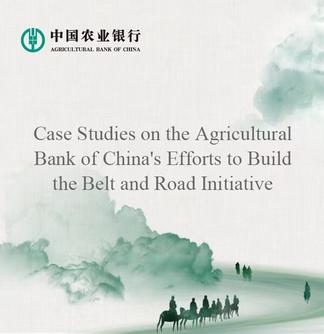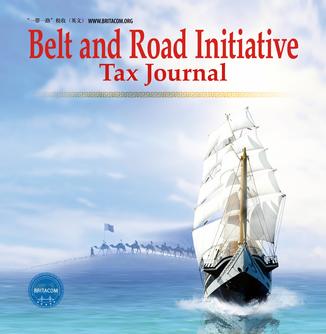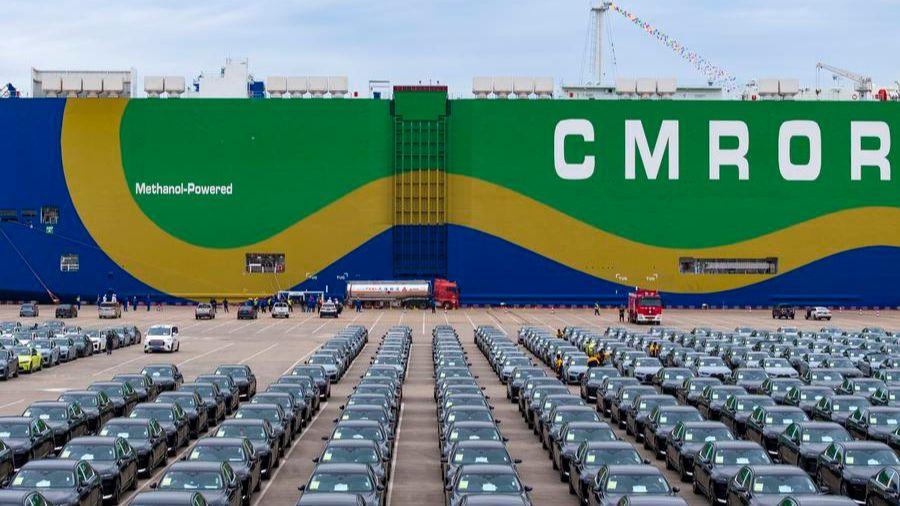A drone photo shows green methanol refueling for the ship CM HONG KONG at Tianjin Port in Tianjin, north China, Sept. 22, 2025. (Xinhua/Zhao Zishuo)
HOHHOT, Oct. 9 (Xinhua) -- A hinterland area in northeast China, better known for its vast cornfields and strong winds, might have been an unlikely hub for the global shipping industry.
Yet an energy revolution is taking hold here as the clean fuel it produces is set to power the world's largest cargo ships and reshape the future of global trade.
Utilizing its abundant renewable resources, including wind, sunlight and biomass, Xing'an League in Inner Mongolia is now pioneering the production of green methanol, a clean alternative to fossil fuels that is crucial for reducing carbon emissions in the shipping industry.
This immense commercial potential is driven by a looming global regulatory milestone. The International Maritime Organization is poised to vote on a historic "net-zero framework" this month, which is described as the toughest carbon emission rules in the sector.
If adopted, the framework is scheduled to take effect in 2027, making it the world's first to combine mandatory emission limits with a carbon price across the entire industry, covering approximately 90,000 large ocean-going vessels, each with a gross tonnage exceeding 5,000.
With the clock ticking, shipping giants such as Maersk and Hapag-Lloyd are scrambling to find alternative sources of fuel. This situation is now turning China's long-term investments in renewable energy infrastructure into a decisive cost advantage.
This is where Xing'an League's unique niche comes in. It boasts wind power potential of 40 million kilowatts and produces 6 million tonnes of corn annually, resulting in over 7 million tonnes of collectable corn stalks.
Chinese company Goldwind, one of the front-runners, is leveraging these assets.
Goldwind launched a 500,000-tonne wind-powered green methanol production project in Xing'an League in April 2024. The league, rich in biomass resources, offers a vital source of green carbon for green fuels, while the company's wind power development in the region guarantees a massive supply of green power for the production, thus completing a "green loop" of the project.
A groundbreaking ceremony was held just months after Goldwind signed a long-term agreement with Maersk to supply 500,000 tonnes of green methanol annually, with the initial production expected in 2026. The deal represents the shipping industry's first large-scale procurement of green methanol.
Later in 2024, Hapag-Lloyd secured a contract with Goldwind for the delivery of 250,000 tonnes of green methanol per year to ensure greenhouse gas emissions reduction of at least 70 percent.
The story of Xing'an League is more than a local industrial tale. China's green methanol sector has experienced explosive growth in recent years. By August of this year, there had been 173 green methanol projects across China, with a combined annual production capacity of 53.46 million tonnes.
Ships built in China are also joining this transition. In July of this year, China's first batch of green methanol produced from municipal waste was pumped into a container ship at a port in the island province of Hainan.
Compared to traditional fossil fuels like diesel, the 200 tonnes of green methanol resulted in a reduction of approximately 325 tonnes in carbon dioxide emissions.




 A single purchase
A single purchase









